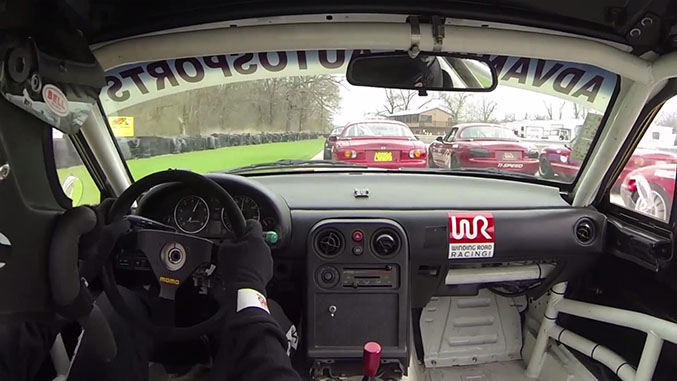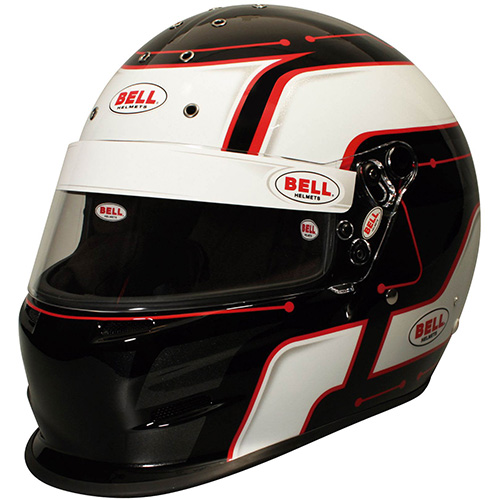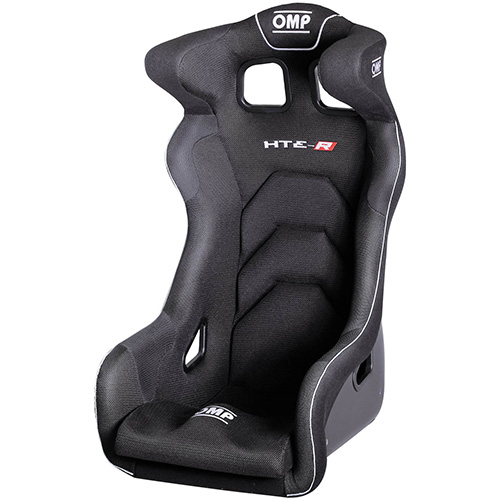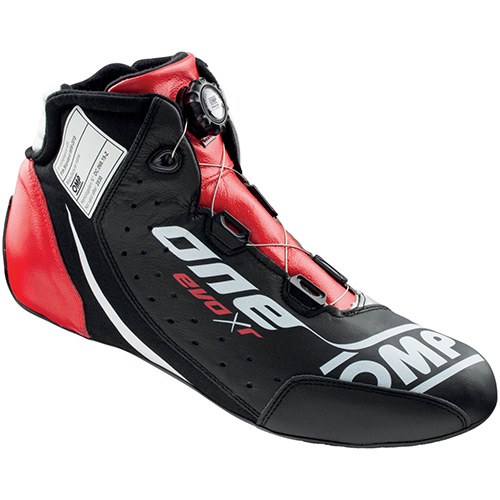Three Common Methods of Steering Wheel Control – But Which Makes You Faster?

This is a controversial topic, with many differing opinions. One of my objectives for Speed Secrets Weekly has always been to provide different perspectives, and that's why we have a different guest contributor each week. To address these questions and comments, I’m going to tackle the topic in the feature article, and then have two coaches/drivers whom I respect immensely, Peter Krause and Peter Carroll, share their thoughts (which you can find on the Speed Secrets site). – Ross
Let me start with what I believe is a pretty non-controversial statement – one that I think everyone will agree with: The smoother you turn the steering wheel, the better.
Oh, and I better get another statement of fact out of the way right now, too: There are exceptions to every rule.
How about this one: The less you move your hands, the smoother you’ll turn the steering wheel. Okay, I’m sure there are some of you who will disagree. You’ll say that you’re able to turn the steering wheel as smoothly as anyone else, while moving your hands on the wheel. In other words, you’re using some form of shuffle steering, and you believe you’re able to be as smooth as someone who keeps their hands in one place – in the 9&3 position.
That’s what we’re going to explore in this article.

But first, let’s start with a few definitions of the various steering methods.
The 9 & 3 method: You keep your hands at the 9 & 3 position as much as possible. When turning right, for example, your left hand goes up and over the top, while your right hand goes along the bottom. At some point near 180 degrees of turning (sometimes before that point and sometimes after that point, depending on your car, your seating position, and your body), your bottom/right hand allows the wheel to slide a little, the hand staying around the 7 o’clock position – but it never fully releases the wheel (it’s always in some contact with the wheel).
The shuffle method: The hands start in the 9 & 3 position, but they only ever move (for a right-hand turn) to about 10 & 4, or maybe the 11 & 5 o’clock positions, at which point they are repositioned back to near the 9 & 3, and the wheel is then turned again. Drivers who do this best alternate the repositioning of the hands so there is very little to no stop-start movement of the wheel. Drivers who don’t do this method well definitely have a “stutter” to the movement of the wheel.
Hand-over-hand method: This is the method that was (and still is in many places) taught to teen drivers when they’re going through drivers ed. It has its place – any time that you need to turn the wheel a lot, in a hurry, such as dealing with a big spin. Definitely, this applies to skid pad practice, but can also be used on the track when your car is in a big slide or spin.
Repositioning method: With this method, on the approach to a tight corner, you reposition your hands so they’re near the 9 & 3 position in the middle of the corner. For example, approaching a very tight right-hand corner, you would reposition your hands to about 7 & 1 o’clock, turn the wheel to go through the corner, and then reposition them back to 9 & 3 after the corner. This method is popular with autocrossers, since they have to turn so much.
Oh, and there are hybrid techniques. I’ve seen drivers use some combination of one or more of these methods.
Okay, now let me define what and where we’re driving at and to on this issue. I’m talking today about being the best driver you can possibly be on a track (this also applies to driving on the street). We’re not talking about rallying, off-roading, autocrossing, or even driving around a skid pad.
In my experience of instructing thousands of drivers (in the past 35-plus years of training drivers, I’ve worked with an average of a hundred drivers each year – that's a lot of drivers), from in and out of the car, and using video and data analysis, drivers who move their hands from the 9 & 3 position do not turn the steering quite as smoothly as those who keep their hands at 9 & 3. If it was just a few drivers who I’d observed, you could argue with my observations, but based on that many drivers, it’s a fact.
(Again, there are always exceptions to this. I’ve also observed drivers who move their hands constantly, and are extremely smooth. But in most cases, the smoothest drivers are the ones who use the 9 & 3 method.)
So why, then, do some instructors teach the shuffle method of steering? Here are a few reasons:
- For many, it’s a leftover from days past. Sorry to say that, but there was a time when cars needed their steering wheels turned more than they do today. There was also a time when holding the steering wheel at 10 & 2 was the best way. Why? Because in an old car, with heavy steering effort, and a huge hula-hoop-sized steering wheel, you needed the leverage from your arms to turn it. That was then, this is now: We have smaller wheels, the steering is more precise, and it doesn’t require all that much effort any more. This is why we teach holding the wheel at 9 & 3 – not to mention that steering wheels are round, and it makes sense to keep our hands horizontally opposed for maximum sensitivity and control. (And don’t get me started on the fact that some driver’s ed “experts” are teaching teens to hold the wheel at 8 & 4 because they don’t want their arms broken by an air bag going off in a crash! Doesn’t it make more sense to teach teens to control their cars better, with hands in the 9 & 3 position, so they don’t get in the crash in the first place?!)
- It’s easier. Yes, you heard me, it’s easier to do – in the beginning. Over time, it’s not easier, though. In fact, it’s easier to use 9 & 3 in the long run, but it’s harder to learn to use it in the beginning.
- They say that you may run out of the ability to turn the wheel if you keep your hands at 9 & 3, and by shuffling the wheel you can always turn it more. (This is a poor excuse. In my experience, if you need to turn the wheel more than you’re able to with 9 & 3, then you’re either driving the wrong line, or you’re not looking far enough ahead, and you're not planning ahead. I've never driven a car around a race track that I couldn't keep my hands at 9 & 3 the entire time.)
Why do I teach 9 & 3?
- It’s a smoother, more fluid way of turning the wheel.
- Your hands are always in contact with the wheel, for more control.
- It “forces” you to not turn the wheel too much.
- You always know where straight ahead is. (For those who say that piece of tape, or the mark at the top of the wheel shows you where straight ahead is, forget it. Okay, in rallying, that may be useful because you’re having to put in more steering angle. Again, I’m not talking about rallying here. Part of the tape or mark at the top of the wheel is a style thing – someone thinks it’s cool, so they add it and justify it. I don’t know about you, but I’m looking way beyond the top of my steering wheel when I’m driving – especially in a situation where I have to think about where straight ahead is.)
- It encourages – to borrow a phrase from 3-time World Champion, Jackie Stewart – “economy of movement.”
If you ask me to coach you for a day – and you shuffle steer – will I change you? Probably not. If you’re good at shuffle steering, then there are probably other things more important to work on. If you ask me to coach you to be the best driver you can possibly be, and time is no issue, will I suggest you use 9 & 3? Yes. Why? Because, over time, it is consistently the best way to drive smoothly and quickly.
Will those of you who believe that your shuffle steering works change to hands at 9 & 3? I doubt it. Why? Because it’s become a habit, and you're comfortable driving that way. And I bet you’re really good at it.
There was a time early in my driving career where I did not trail brake at all. I had been taught to do all my braking in a straight line, then release the brakes and turn into the corner. If I’d kept driving that way, I could have been a pretty darn good driver. I could have stayed comfortable doing what I was doing. But I wouldn’t have been the best I could be. I chose to make the effort to change because I had learned that blending my braking with turning into a corner was a better way. It was difficult to change that habit, but I found a way to do it, and put the effort into making that change. It was worth it. The same can be said about steering technique.
Are there great, successful drivers who shuffle steer? Yes. Does that make it the best way to drive? No. It’s no different than looking at video or photos of Ayrton Senna and saying that you should lean your head while driving through corners. Science has shown us that we take in and process visual information more accurately if our heads are upright, not leaning. That’s why drivers are taught not to lean their heads when cornering. That’s why motorcycle racers keep their heads as upright as possible. But look at Senna, arguably the greatest driver of all time. He leaned his head! Does that make it right? No. It does make you think that Senna could have been even better. There are many examples of athletes who didn’t swing, throw, run, or something with the best technique. But they practiced it so much that they made it work.
Driving is no different. There are so many techniques and skills that you have to pull all together, sometimes even compromising one for another, to be at your best. How you turn the steering wheel is one of those. If you have the choice, why wouldn’t you choose to use the best possible method to begin with, and make it a habit?
Ultimately, it's what you do with the wheel that matters most. Taken to the extreme, if you turned the steering wheel with your nose(!!!), but did it effectively, that's okay. What matters most is the smooth, accurate turning of the wheel.
And while I'm on the subject, I hear some people say that you should pull down on the wheel, while others say you should push up on the wheel to turn it. I think both are ridiculous. Driving is a two-handed sport, so turn the wheel by pushing with one hand while you pull with the other. Saying that you should only use one is like saying hold a golf club with two hands, but only swing it with one hand.
Okay, I was asked a simple question: Which is best for performance driving on the track, the shuffle or 9 & 3 method? I’m telling you that the best is the 9 & 3 method.
Can you be very good using the shuffle method? Yes. Can you be the best you can be? No. Can a driver always improve? Yes. Should we always be looking at ways to upgrade our techniques, and consider how cars have changed (and how that might change a technique that we've built a habit around)? I believe so.
– Ross Bentley
Web: http://www.speedsecrets.com
Facebook: www.facebook.com/Drivercoach
Twitter: @SpeedSecrets
Exerpted from Ross Bentley’s Speed Secrets Weekly. For more tips and additional articles on the art and science of racing, click here to subscribe.
Also be sure to check out Ross Bentley's book, Ultimate Speed Secrets: The Complete Guide to High-Performance and Race Driving.
+Speed Secrets: Effective Physical Training to Prepare for Race Season


















